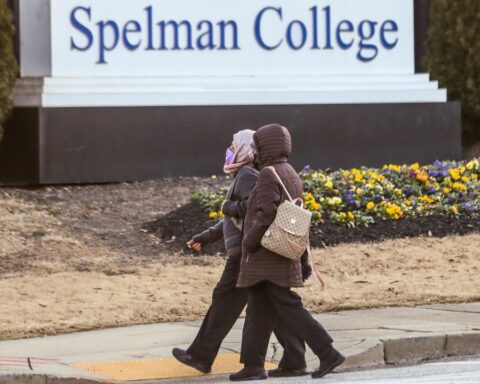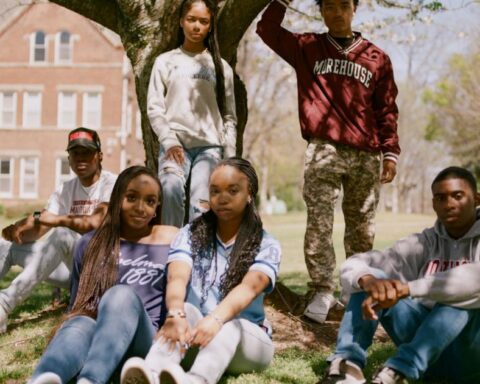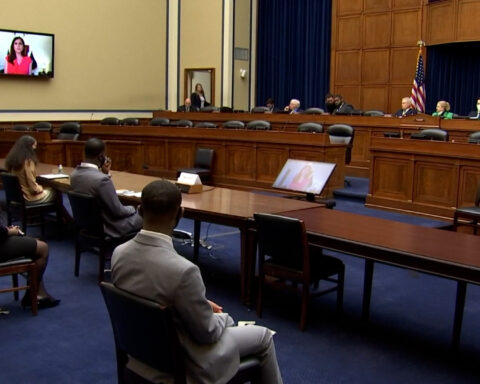By Stephanie Saul
Historically Black colleges and universities are having a moment, one that many educators say is more than a century overdue.
It may have started with the new vice president, Kamala Harris, who has celebrated her roots at Howard University, calling it “a place that shaped her.” Howard, in Washington, also recently announced a string of high-profile hirings, including the writers Ta-Nehisi Coates and Nikole Hannah-Jones and the actor Phylicia Rashad, who was appointed dean of the fine arts program.
Athletic programs are landing top recruits, and making big-name hires. Bethune-Cookman University in Daytona Beach, Fla., recently announced that Reggie Theus, the former Chicago Bulls guard, has become its athletic director.
And money is pouring in. The philanthropist MacKenzie Scott has given more than $500 million to more than 20 historically Black colleges in the past year. Google, TikTok and Reed Hastings, the co-chief executive of Netflix, have given $180 million more. Lawmakers on Capitol Hill delivered more than $5 billion in pandemic rescue funding, which included erasing $1.6 billion in debt for 45 institutions.
The donations, hirings and government money seem to signal a belated epiphany, a sudden recognition of the importance of the nation’s 100 historically Black colleges, which have educated Black Americans when other institutions openly, or subtly, would not.
“We’ve been here since 1865,” said George T. French Jr., president of Clark Atlanta University. But it is only now, he said, that he can reel off the names of donors who have contacted him.
He often asks donors, “Why am I just getting a call from you right now?”
Their answer, he said: “‘We were disturbed by what happened with George Floyd and other atrocities. And we want to do our part — to say we’re sorry.’”
But for some historically Black colleges, the future remains worrisome. Although the better-known institutions — including Howard, Morehouse and Spelman — are not in danger, other colleges, many of them small and rural, have been hit by declining enrollments and budgets. At least six have closed in the past 20 years and by several metrics, more than a handful of Black colleges are regarded as endangered.
The issues are partly demographic: There are fewer high school graduates, and Black students have been lured to other institutions with larger endowments and financial aid budgets. Even before the pandemic, enrollment at historically Black institutions had dropped to its lowest point since 2001, a rate of decline recently estimated at 1.4 percent a year, according to the National Student Clearinghouse.
“We’ve been here since 1865,” said George T. French Jr., president of Clark Atlanta University. But it’s only now, he says, that he can reel off the names of donors who have contacted him.Credit…Bee Trofort for The New York Times
John S. Wilson Jr., who has served as the president of Morehouse College and as a White House adviser on historically Black colleges, said that the institutions, known collectively as H.B.C.U.s, must seize this moment.
“Is this a sustainable moment that constitutes a new era?” said Dr. Wilson, whose forthcoming book, “Up From Uncertainty,” focuses on the future of historically Black colleges. “I think that answer could be ‘yes’ for a lot of H.B.C.U.s. Unfortunately, I think it’s also going to be ‘no’ to some institutions.”
Most Black colleges and universities were formed during the 19th century to educate people freed from slavery. Some students literally had to build their schools: At Tuskegee University in Alabama, they dug the clay and molded and fired the bricks used to construct their campus.
The schools became centers of scholarship and intellectualism, turning out most of the nation’s Black doctors, teachers and judges and boasting alumni such as the Rev. Dr. Martin Luther King Jr., the filmmaker Spike Lee, the writer Toni Morrison and the Rev. Raphael Warnock, a Democratic senator from Georgia.
The more established colleges have used the new money to build on their legacies. Spelman and Morehouse, both in Atlanta, and Hampton University in Hampton, Va., have started entrepreneurship programs, for instance. And Howard in particular has been able to lure talented faculty members who might otherwise have gone elsewhere.
Ms. Hannah-Jones, a staff writer for The New York Times Magazine who won a 2020 Pulitzer Prize for her work on the 1619 Project, rejected an offer from the University of North Carolina at Chapel Hill after a controversy over whether she would receive tenure. She elected to join Howard, bringing with her $20 million in donations from the Knight Foundation, the Ford Foundation, the MacArthur Foundation and an anonymous donor.
Mr. Coates is leaving his job at New York University.
In an interview, Mr. Coates, a Howard alumnus, said his decision had partially reflected a continuation of a political statement he made when he enrolled in Howard in the first place — that he had a “desire to be around other intelligent, curious, people of African descent.”
“That’s the decision I made when I was 18, and the thing that I’ve valued all my life,” said Mr. Coates, who won the National Book Award in 2015 for his work “Between the World and Me.”
Some historically Black institutions have abysmally low graduation and retention rates, a problem that some experts say is not surprising, given the economic backgrounds of their students. Many are the first in their families to attend college, and more than 60 percent receive federal Pell grants designed for low-income students.
“The need and support that’s required to serve those students is not accounted for,” said Brent Chrite, the former president of Bethune-Cookman, who in 2020 successfully lobbied the state of Florida for more money.
Despite having notable alumni, even the better known institutions, like Morehouse College in Atlanta, have historically received inadequate support.
Credit…Dustin Chambers for The New York Times
Historically Black public universities have faced funding shortfalls as state governments have been more generous with their white-majority counterparts. But some lawmakers — frequently pointing to low graduation rates — have suggested that some of these colleges merge with majority-white institutions or close.
“Their problems are not different from what’s facing a lot of the small private predominantly white colleges,” said Andre M. Perry, a senior fellow at the Brookings Institution. “But when it comes to H.B.C.U.s, it is really hard to untangle whether they should close, versus whether people want them to close.”
Dr. Chrite, now president at Bentley University in Waltham, Mass., suggests that some colleges consolidate operations and share services, like technology management or human resources, with other institutions.
And historically Black colleges need to do some reaching out. Many prospective students are simply not aware of the institutions, said Johnny C. Taylor, former president of the Thurgood Marshall College Fund, which represents the 47 publicly funded Black colleges and universities.
“The average person, a non-H.B.C.U. graduate, even if that person were Black, didn’t even know what they were,” said Mr. Taylor, who served as chair of President Donald J. Trump’s advisory board on H.B.C.U.s and credits the former president with raising the schools’ visibility.
Ta-Nehisi Coates will teach at Howard University in Washington.Credit…Cole Wilson for The New York Times
(Right)
Nikole Hannah-Jones will start a new journalism center at Howard.Credit…Benjamin Norman for The New York Times
Some students have chosen historically Black colleges, despite the drawbacks. Two years ago, Zakiyyah Carter, who grew up in Orange, N.J., transferred from New York Institute of Technology to Cheyney University of Pennsylvania.
Formed in 1837, Cheyney is the country’s oldest historically Black college, with an enrollment of about 600. But it has struggled financially and is designated for heightened financial oversight by the Education Department. While more than 60 percent of college students graduate within six years, Cheyney’s rate is 27 percent, according to federal statistics. Ms. Carter, 23, describes frustrations at Cheyney. Classes were sometimes unavailable, and phone calls did not always get answered. Yet, she said, the experience was transformational.
“Just the pride that you have coming from an H.B.C.U. can push you to do a lot of great things,” said Ms. Carter, who graduated this year and is working for the mortgage guarantor Freddie Mac, a job she landed through a program sponsored by the Thurgood Marshall College Fund.
In a statement, the college said it is completing a turnaround and has balanced its budget for three consecutive years.
Another small institution that was once regarded as struggling, Paul Quinn College in Dallas, has undergone a renaissance of sorts through innovation. The president, Michael Sorrell, turned Paul Quinn into a work college, meaning that all students have campus jobs and are graded on their performance. He abolished the football team, planting an organic garden on the playing field.
Dr. Sorrell solicited help from private donors, including the Texas businessman Trammell S. Crow and the N.B.A.’s Dallas Mavericks. But he said that much of the recent corporate generosity had bypassed the smallest historically Black colleges.
“The corporate funding is more targeted toward a small group of schools,” Dr. Sorrell said. “We don’t see people backing up the truck saying, ‘Here’s $10 million for you.’”
More help may be coming. President Biden is pushing a proposal to direct $39 billion to subsidize two years of tuition at historically Black four-year colleges and other minority- serving institutions. And Representative Alma S. Adams, a Democrat of North Carolina and the founder of the Congressional Bipartisan H.B.C.U. Caucus, has rounded up more than 100 co-sponsors for legislation to renovate and repair the campuses.
“H.B.C.U.s tend to be something that Democrats and Republicans can agree on,” said Lodriguez Murray, vice president of the United Negro College Fund, which has lobbied on behalf of the colleges. But, he said, the funding to date is not enough.
“Many of these institutions have lived through 150 years of underinvestment,” Mr. Murray said. “There’s more to be done on behalf of students.”







